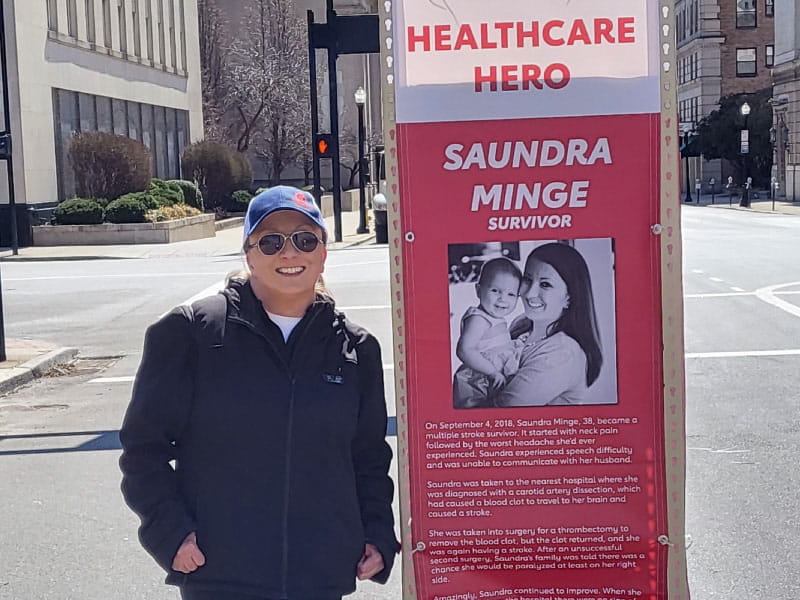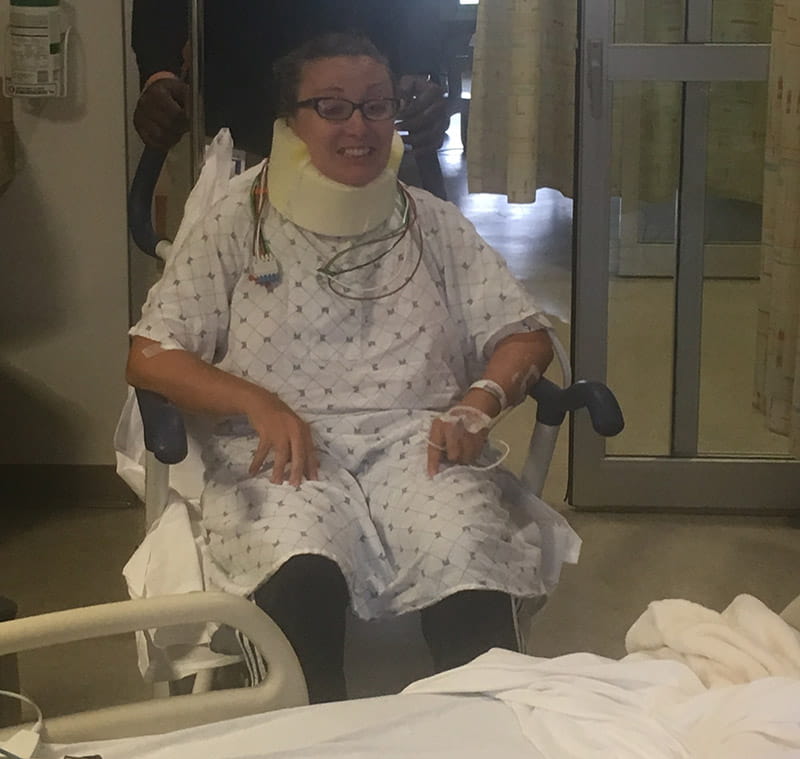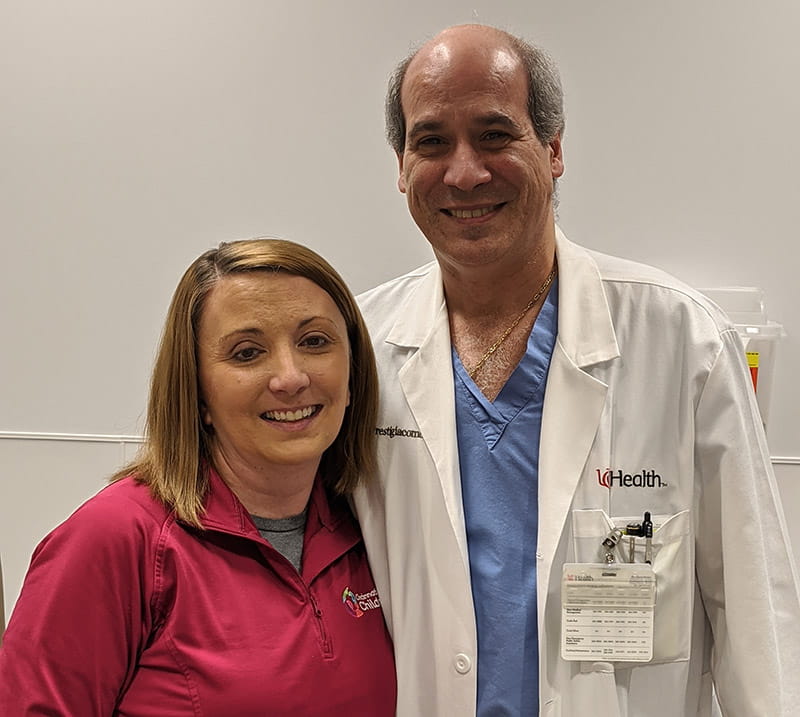At 38, she had two strokes in one day
By Deborah Lynn Blumberg, American Heart Association News

Even though her neck was throbbing, Saundra Minge invited her 7-year-old nephew and 3-year-old niece over for a Labor Day swim. She chalked up the pain to sleeping funny and thought it would go away.
For five hours, she played with the kids in the pool. Her neck pain was getting worse. That night she woke up with an excruciating headache, reminiscent of the migraines she gets.
She took a pain reliever and went downstairs to sleep so she wouldn't bother her husband, Mark. Hours later, when her cellphone alarm sounded, Saundra – who was then 38 – went back upstairs to get dressed for work.
When she said goodbye to Mark, he said, "Are shoes optional today?" It was a joke – a reference to the fact she wasn't wearing shoes.
Saundra tried to answer, but she couldn't speak. Mark brought her a pencil and paper. She wrote, "I took, we, if, he."
As this played out, the phone rang. Saundra's younger sister, Melissa, called because she thought her son forgot his shoes there. Mark told Melissa something was wrong with Saundra. Melissa arrived 10 minutes later. Soon after, she and Mark noticed Saundra's face starting to droop. They realized Saundra likely was having a stroke.
In the emergency room, doctors showed Saundra a drawing of a chaotic morning in a family kitchen and asked her to describe the scene. She couldn't say a word.
A CT scan showed a tear in one of her carotid arteries, the vessels in the neck that supply blood to the brain. A blood clot escaped through there and traveled to her brain. Such a tear is usually caused by trauma, which she hadn't experienced.
She was taken by helicopter to a hospital 20 miles away because she needed more advanced treatment. Once a surgeon removed the blood clot, Saundra regained her ability to speak.
"My speech was a little slurred, but after what I went through, everything was going remarkably well," she said.
Things soon became so calm that Mark went home to take care of their two dogs.
"I thought we were out of the woods," he said.
Three hours later, Saundra woke up nauseous. She couldn't speak again. A second blood clot had formed, and she was having another stroke.
Her doctor rushed her to the operating room – only this time, the surgery didn't work. He couldn't remove the clot.
"Now it's a waiting game," the doctor said, meaning there was no way of knowing what the clot might do. They hoped it would settle on its own. At worst, it could travel to her lungs or heart, where it could be fatal. There also were concerns that she might be paralyzed on her right side.
The next day, Saundra squeezed Mark's hand with her right hand. Mark asked her to name her favorite movie – one about a man on a park bench and life is like a box of chocolates.
"I'm in my head saying 'Forrest Gump! Forrest Gump!' but I couldn't speak," she said. Finally, five minutes later, she blurted out the name. "My husband looked at the nurse who was in the room and said, 'I think she's going to be OK.'"

Seven days later, Saundra walked out of the hospital. A scan earlier that day showed no sign of problems.
"The doctor said, "To say this is the best-case scenario you could hope for is an understatement,'" Saundra said.
At home in Cincinnati, she struggled with her speech, but it slowly improved. The day before Halloween, she returned to her job as a coordinator at a poison control center in a hospital.
More than three years later, Saundra's speech is improved, though she sometimes struggles to find the right word.
She's proud to use her voice to encourage others to learn the acronym FAST to remember the warning signs of a stroke: (F)ace drooping, (a)rm weakness or (s)peech difficulty means it's (t)ime to call 911.
"Stroke does not discriminate," Saundra said. "It can affect anybody at any age."
She has regular appointments with her neurosurgeon who urges her to be diligent about monitoring for symptoms of another stroke.

"Every headache or strange pain you have, you wonder, 'Am I having another stroke?'" she said. But she trusts her doctor.
"He says I need to live my life. I've put it in God's hands, and in my neurosurgeon's hands. I trusted him with my life, and I still do."
Stories From the Heart chronicles the inspiring journeys of heart disease and stroke survivors, caregivers and advocates.
If you have questions or comments about this story, please email [email protected].





